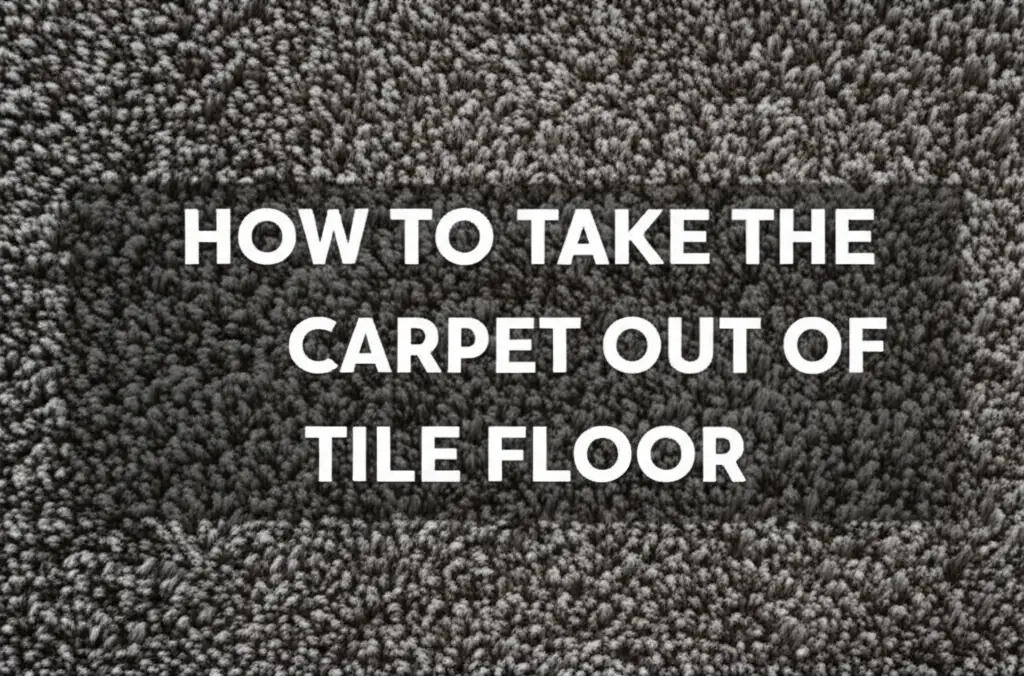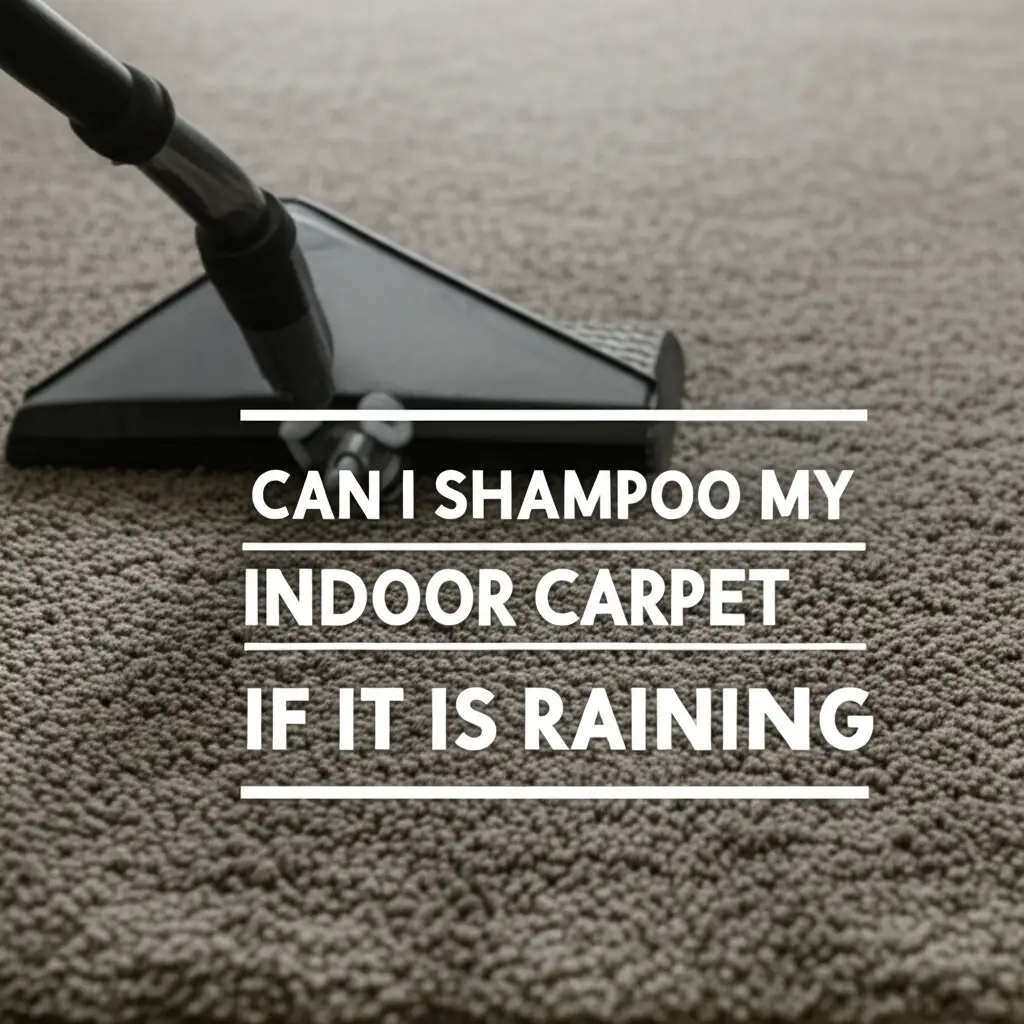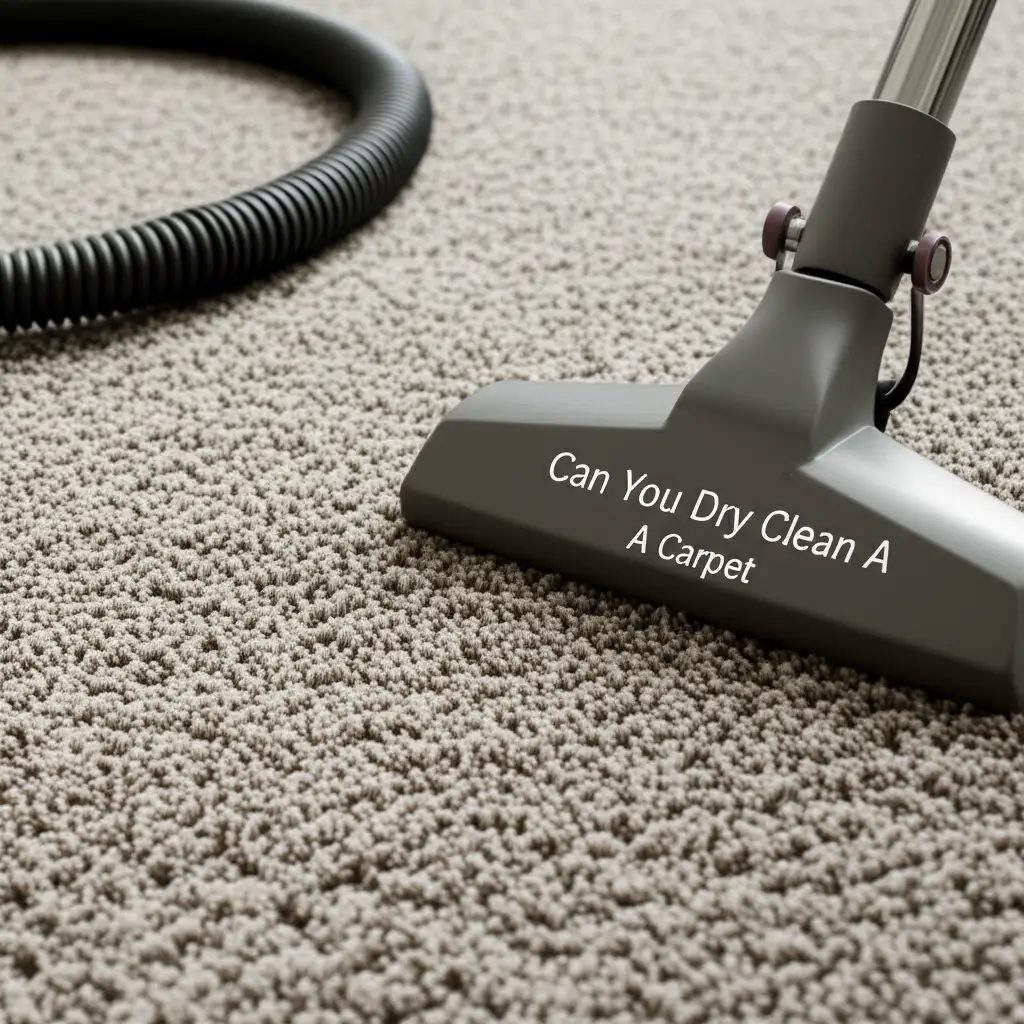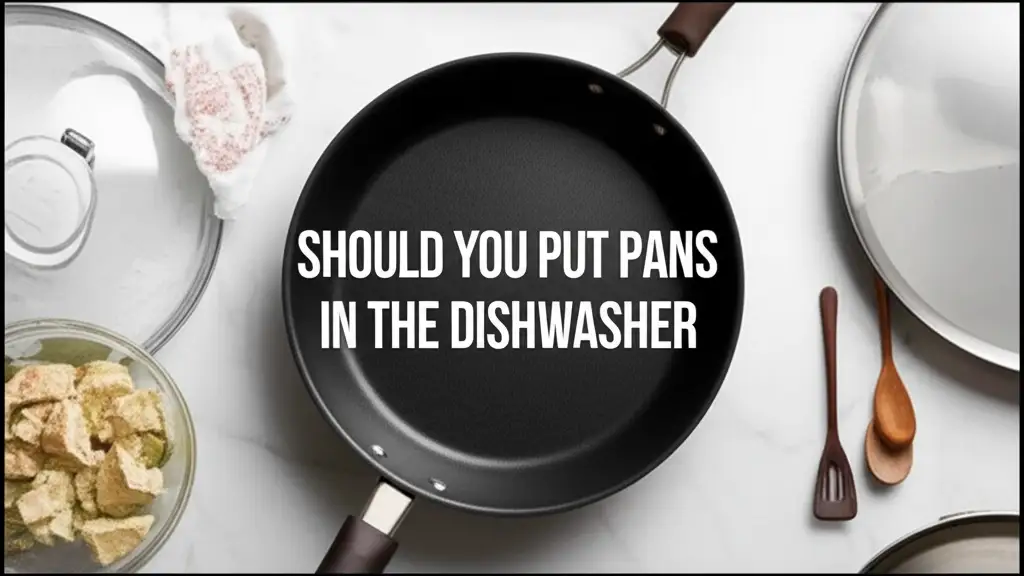· Tessa Winslow · Commercial Flooring · 12 min read
How To Take Up Commercial Carpet
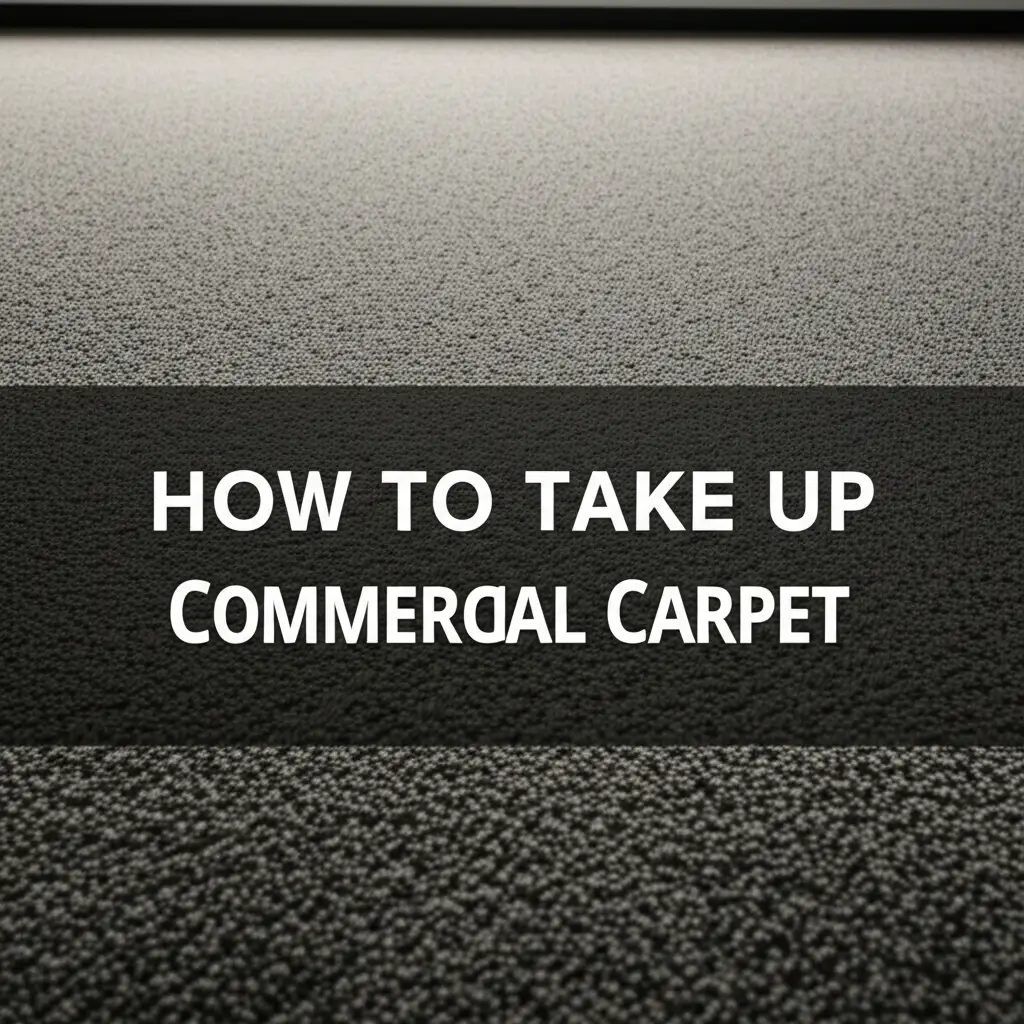
How to Take Up Commercial Carpet Safely and Efficiently
Transforming a commercial space often begins with removing old flooring. If you are wondering how to take up commercial carpet, you are in the right place. Removing commercial carpet can feel like a big job, but with the right approach, it is manageable. This guide provides clear steps to help you successfully complete the task. We will cover everything from safety to disposal, making sure your renovation project goes smoothly.
Understanding the different types of commercial carpet and their installation methods is key. Some carpets are glued down, while others use tack strips or simply lie as tiles. Each method requires specific tools and techniques for effective removal. Proper planning saves time and effort. We will walk you through the necessary preparations, the tools you need, and the step-by-step process for different carpet types. My goal is to make this process clear and simple for you.
Takeaway:
- Plan Ahead: Clear the area, gather tools, and understand your carpet type.
- Prioritize Safety: Wear protective gear like gloves, safety glasses, and sturdy shoes.
- Choose the Right Tools: A utility knife, floor scraper, and pry bar are essential.
- Work Systematically: Remove broadloom carpet in strips and carpet tiles individually.
- Clean the Subfloor: Address residual adhesive and prepare the surface for new flooring.
- Dispose Responsibly: Recycle carpet materials if possible to minimize environmental impact.
Taking up commercial carpet involves clearing the area, gathering tools, and carefully cutting and pulling the carpet. For glued broadloom, cut strips and scrape adhesive. For tiles, lift them individually. Always prioritize safety, and prepare the subfloor for the next installation.
Preparation is Key: Steps Before Commercial Carpet Removal
Before you even think about cutting or pulling, proper preparation is crucial. A well-prepared workspace makes the job safer and more efficient. Start by removing all furniture, equipment, and any other items from the room. This clears the path and gives you ample space to move around freely. Make sure doors can open fully for easy carpet removal.
Next, you must protect the surrounding areas. Cover any exposed walls or permanent fixtures with plastic sheeting. This prevents dust and debris from settling on them. You might also want to protect adjacent finished floors with temporary coverings. This prevents damage during the removal process.
Understanding the type of commercial carpet you have is also vital. Is it broadloom, which comes in large rolls and is often glued down or stretched over tack strips? Or is it modular carpet tile, which is usually held in place with a pressure-sensitive adhesive? Knowing this helps you pick the right tools and techniques. This step ensures you do not waste time on ineffective methods.
Finally, ensure proper ventilation in the space. Opening windows or using fans helps clear dust and fumes from adhesives. This improves air quality and makes the work environment safer for you. Taking these preparatory steps will set you up for success.
Essential Tools for Taking Up Commercial Carpet
Having the right tools makes a significant difference in how easy or difficult the job becomes. Do not try to rush this step; gathering everything beforehand saves you trips later. The most important tool is a heavy-duty utility knife with plenty of sharp blades. Dull blades make cutting tough and dangerous. I always keep extra blades on hand.
You will also need a floor scraper or power carpet stripper, especially for glued-down broadloom. A manual scraper works for smaller areas, but a power stripper saves a lot of back pain on large jobs. Consider renting one for extensive commercial spaces. This speeds up adhesive removal.
A pry bar or flat bar is essential for lifting tack strips or prying up stubborn sections of carpet. Sometimes the edges are really stuck. Good work gloves protect your hands from cuts and blisters. Safety glasses are a must to protect your eyes from flying debris or dust.
For disposal, sturdy trash bags or large construction bags are necessary. You will also need a dolly or hand truck to move heavy rolls of carpet. If the carpet is glued, a chemical adhesive remover or a floor buffer with an abrasive pad might be useful for subfloor cleaning. For understanding more about what is under your carpet, you might find information on how to find floor studs under carpet helpful.
Tackling Broadloom Commercial Carpet Removal
Removing broadloom commercial carpet, especially if it is glued down, requires a systematic approach. Start by cutting the carpet into manageable strips. I usually begin by making a cut down the middle of the room. Then, I cut parallel strips about 2-3 feet wide. This width is easier to handle and roll up.
Once you have your first strip cut, begin at one corner or edge of the room. Use your pry bar or a strong grip to lift the edge of the carpet. If it is glued down, you will need to pull hard, often using the floor scraper to help separate the carpet from the subfloor. For areas with tack strips, carefully pull the carpet up and away from the strips. Be careful of sharp points on the strips.
As you pull up each strip, roll it tightly. Use duct tape or heavy-duty tape to secure the roll. This makes the pieces compact and easier to carry away. Continue this process, working your way across the room strip by strip. Do not try to remove too large a section at once.
If the carpet is heavily glued, you might need to apply a chemical adhesive remover. Follow product instructions carefully and ensure good ventilation. This helps loosen the glue, making the carpet easier to pull up. This process can be labor-intensive but rewarding. You can gain insights into similar removal processes by looking at how to take the carpet out of tile floor.
Removing Commercial Carpet Tiles: A Simpler Approach
Commercial carpet tiles are generally easier to remove than broadloom carpet. This is because they are individual squares, not a continuous sheet. They are typically held in place with a pressure-sensitive adhesive that allows for easy lifting. This makes them ideal for targeted repairs or full removal.
Start by locating the edge of the room or finding a loose tile. Use a utility knife to score the perimeter of the tile you wish to remove. Often, you can just lift a corner with your fingers or a small pry tool. Once you get a corner up, you can usually peel the entire tile off the subfloor.
Work your way across the room, lifting one tile at a time. Stack them neatly as you go. This makes them easier to count, store, or dispose of later. Some tiles might be more firmly adhered than others. A floor scraper can help with stubborn ones.
The great advantage of carpet tiles is that they leave less adhesive residue. This means less cleanup on the subfloor. Always check the manufacturer’s installation guide if you are unsure about the adhesive type. This simpler removal process is a big benefit for commercial spaces needing frequent changes.
Dealing with Adhesive and Subfloor Preparation
After you successfully remove all the commercial carpet, your work is not quite done. You will likely find adhesive residue left behind on the subfloor. This residue needs proper removal before you can install new flooring. Ignoring it can cause problems for your next installation. The type of adhesive and subfloor material determines the best cleaning method.
For broadloom carpet installed with strong glues, you might have significant adhesive to remove. Start by scraping as much as you can with a floor scraper. For stubborn, hardened glue, a power floor buffer with an abrasive attachment can be very effective. Chemical adhesive removers are also an option. Always test these in a small, hidden area first. Ensure the space is well-ventilated when using chemicals.
If your subfloor is concrete, it is generally more forgiving to scraping and chemical treatments. If it is wood, you need to be more careful not to damage the surface. Excessive scraping or harsh chemicals can compromise wood subfloors. After scraping and cleaning, vacuum the entire subfloor thoroughly. This removes all dust and small debris.
Finally, inspect the subfloor for any damage, uneven spots, or remaining tack strips. Repair or level any issues before laying new flooring. A smooth, clean subfloor is essential for a professional finish. You might be considering new flooring options like in-floor heating, so understanding your subfloor is key. Check out can you put carpet over in-floor heat for related information.
Disposing of Old Commercial Carpet Responsibly
After the hard work of taking up commercial carpet, you are left with a pile of old material. Proper disposal is a critical final step. Simply throwing it in a dumpster might not be the most environmentally friendly or cost-effective option. Consider the environmental impact of your project.
Many commercial carpets are made from materials like nylon or polypropylene. These materials are often recyclable. Research local recycling facilities or specialized carpet recycling programs in your area. Some municipalities have drop-off points for large quantities of construction waste. Others might offer curbside pickup for bulky items on specific days.
If recycling is not an option, you will likely need to arrange for a junk removal service. These services can handle large volumes of waste. They will typically charge based on the volume or weight of the material. Get a few quotes to compare prices. Another option is to rent a large dumpster. Place the rolled-up carpet strips and tiles directly into the dumpster for easy collection.
Before disposal, ensure the carpet is cut into manageable sizes and rolled tightly. This makes it easier for transporters to handle. Responsible disposal helps protect our planet and ensures your project is truly complete. I always make sure to explore recycling options first.
Troubleshooting Common Commercial Carpet Removal Challenges
Even with careful planning, you might encounter some challenges when taking up commercial carpet. One common issue is extremely strong adhesive. Some glues seem to bond the carpet permanently to the subfloor. If manual scraping is not enough, consider renting a powered carpet stripper or a concrete grinder with a suitable attachment. These machines provide the leverage and power you need.
Another challenge can be hidden tack strips or nails. Always wear thick gloves and sturdy boots. Use a pry bar to carefully lift and remove any remaining nails or tack strips after the carpet is gone. These small pieces can cause injuries. Ensure the subfloor is completely clear of sharp objects.
Dealing with uneven subfloors after carpet removal can also be tricky. Old carpets can hide dips or bumps. If you plan to install a hard surface like vinyl or laminate, you might need to level the subfloor. Use a self-leveling compound for concrete. For wood subfloors, patching compound or new plywood underlayment might be necessary.
Finally, dust and debris are inevitable during carpet removal. Even with good ventilation, the air can become thick with particles. Wear a dust mask or respirator to protect your lungs. Use a shop vacuum with a HEPA filter to clean up thoroughly as you go. This prevents dust from spreading to other areas. My personal experience shows that addressing these issues promptly saves time later.
FAQ Section
How long does it take to remove commercial carpet? The time varies based on carpet type, installation method, and room size. Removing carpet tiles from a 1,000 sq ft office might take 4-8 hours for one person. Glued broadloom of the same size could take 8-16 hours, especially with adhesive removal. Proper tools and a clear plan speed up the process.
What is the best way to remove old carpet adhesive? The best way depends on the adhesive and subfloor. For light residue, scraping with a floor scraper works. For heavy or stubborn glues, a power floor buffer with an abrasive pad or a chemical adhesive remover is effective. Always test chemicals in a small area and ensure good ventilation.
Can I remove commercial carpet myself, or should I hire a professional? You can remove commercial carpet yourself for smaller areas or if it’s carpet tile. Large areas with heavily glued broadloom might be better handled by professionals. They have specialized equipment and experience. Assess your physical capability and the scale of the job before deciding.
What should I do with the subfloor after removing commercial carpet? After removing the carpet, thoroughly clean the subfloor. Scrape off all remaining adhesive and vacuum dust and debris. Inspect the subfloor for damage, unevenness, or moisture. Repair any issues and ensure the surface is dry, clean, and smooth for your next flooring installation.
Is commercial carpet removal a messy job? Yes, commercial carpet removal is generally a messy and dusty job. Old carpets hold a lot of dirt and debris. The removal process can kick up dust, especially if scraping adhesive. Plan for dust control by sealing off adjacent rooms, using fans for ventilation, and wearing a dust mask.
What safety precautions should I take when removing commercial carpet? Always wear personal protective equipment. This includes heavy-duty work gloves, safety glasses, and a dust mask or respirator. Wear sturdy, closed-toe shoes. Be cautious when using sharp tools like utility knives and floor scrapers. Ensure the work area is well-lit and clear of obstacles to prevent trips and falls.
Conclusion
Taking up commercial carpet can seem like a daunting task, but with the right information and preparation, it is a project you can successfully complete. We have walked through everything from initial planning and gathering essential tools to the specific methods for removing broadloom and carpet tiles. Remember to prioritize safety at every step, protecting yourself and the surrounding environment.
Properly dealing with adhesive residue and preparing the subfloor is vital for any new flooring installation. Do not forget the importance of responsible disposal, aiming to recycle carpet materials whenever possible. By following these guidelines, you will not only efficiently remove your old commercial carpet but also set the stage for a smooth and successful renovation. Your commercial space will soon be ready for its new look.


